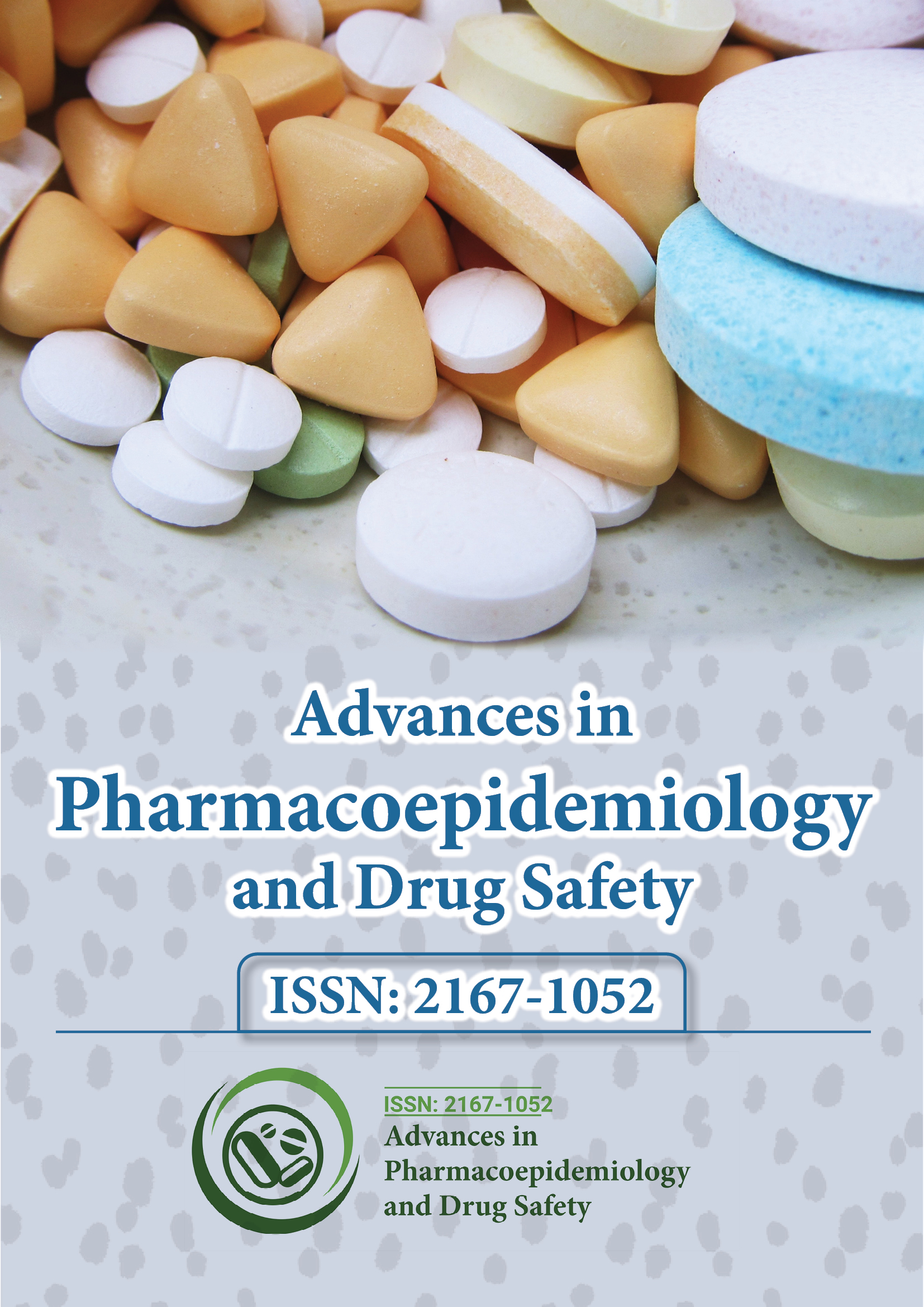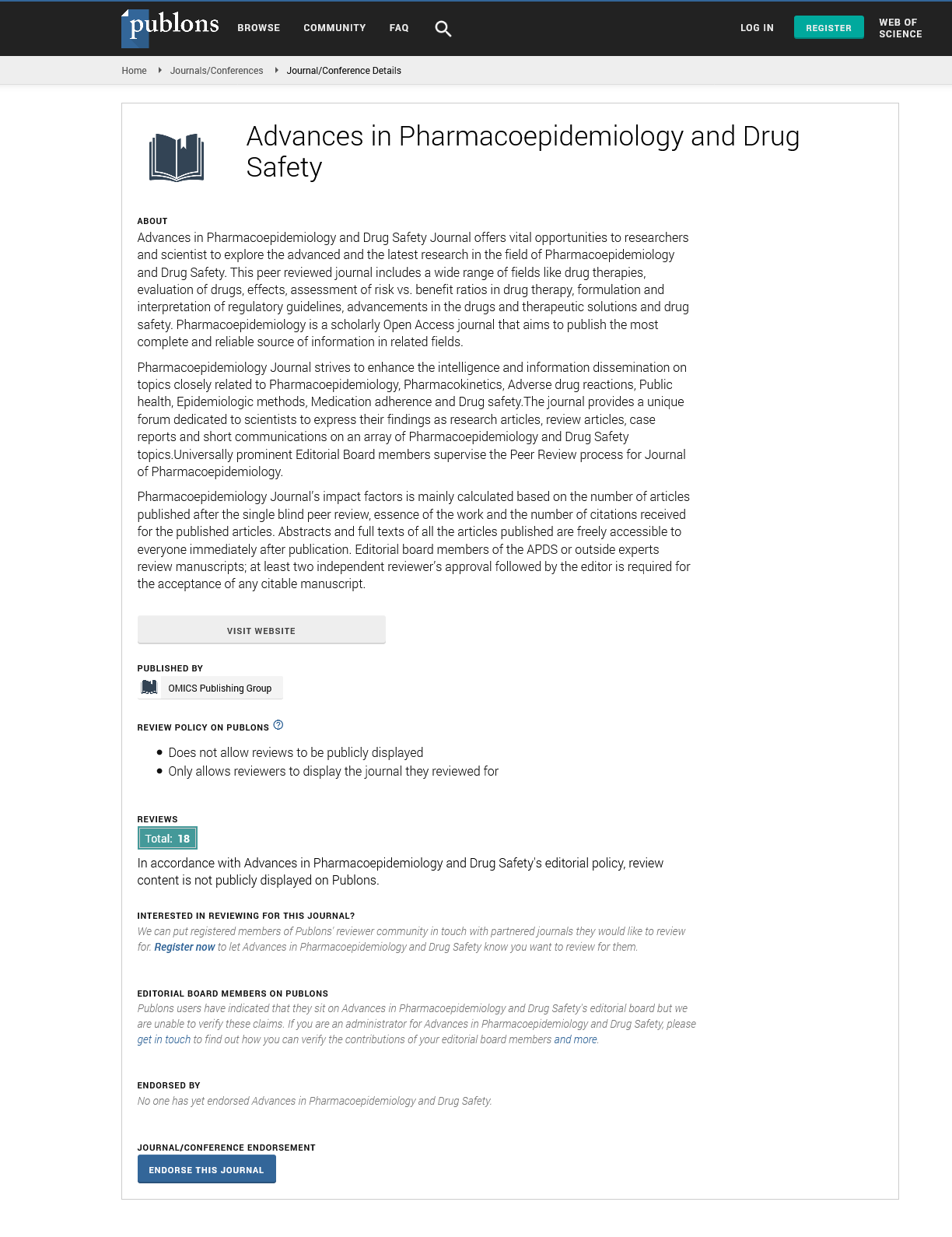Indexed In
- Open J Gate
- Genamics JournalSeek
- Academic Keys
- JournalTOCs
- RefSeek
- Hamdard University
- EBSCO A-Z
- SWB online catalog
- Publons
- Geneva Foundation for Medical Education and Research
- Euro Pub
- Google Scholar
Useful Links
Share This Page
Journal Flyer

Open Access Journals
- Agri and Aquaculture
- Biochemistry
- Bioinformatics & Systems Biology
- Business & Management
- Chemistry
- Clinical Sciences
- Engineering
- Food & Nutrition
- General Science
- Genetics & Molecular Biology
- Immunology & Microbiology
- Medical Sciences
- Neuroscience & Psychology
- Nursing & Health Care
- Pharmaceutical Sciences
Commentary - (2025) Volume 14, Issue 2
Real World Evidence in Advancing Drug Safety Assessment
Gabriel Moreira*Received: 29-May-2025, Manuscript No. PDS-25-29862; Editor assigned: 31-May-2025, Pre QC No. PDS-25-29862; Reviewed: 14-Jun-2025, QC No. PDS-25-29862; Revised: 20-Jun-2025, Manuscript No. PDS-25-29862; Published: 28-Jun-2025, DOI: 10.35248/2167-1052.25.14.394
Description
The significance of Real-World Evidence (RWE) in pharmacoepidemiology has grown substantially in recent years, as healthcare systems increasingly acknowledge that clinical trials alone cannot provide a full picture of a drug's safety and effectiveness. RWE refers to data gathered from sources such as electronic health records, insurance claims, medical registries and patient-generated data. These sources reflect how medications are actually prescribed and used in day-to-day clinical settings. Unlike Randomized Controlled Trials (RCTs), which are conducted under highly controlled conditions, real-world studies offer insights into the practical use of drugs across diverse populations and settings. This broader perspective enables researchers to better understand the risks, benefits and usage patterns of therapies at the population level. One of the key strengths of RWE is its ability to capture data from patient groups who are often excluded from clinical trials. These include elderly individuals, children, pregnant women and patients with multiple comorbidities. Such populations may not meet the strict inclusion criteria set by traditional RCTs but are among the most frequent users of medications in real-world settings. RWE provides essential insights into how therapies perform for these underrepresented groups and can help identify unexpected safety concerns that may not have surfaced during clinical testing.
The widespread adoption of Electronic Health Records (EHRs) has opened up new possibilities for connecting data on prescriptions with diagnostic information, hospitalizations and even mortality. These comprehensive data linkages make it feasible to study rare adverse events that would otherwise require massive and costly clinical trials to detect. Already, real-world studies have uncovered important findings, such as liver injuries linked to specific drugs, cardiovascular risks tied to certain diabetes medications and interactions that raise the likelihood of bleeding. Such discoveries highlight the crucial role RWE plays in enhancing drug safety surveillance. In addition to safety monitoring, RWE is increasingly used to compare the effectiveness of different medications that are approved for the same condition. Pharmacoepidemiologists can assess how various treatments perform in routine clinical practice, providing valuable information to healthcare providers deciding on the most suitable therapy for their patients. This comparative effectiveness research is also vital for policymakers and insurance providers who are responsible for making informed decisions about healthcare resource allocation. By identifying the most effective and safest treatment options, RWE supports the delivery of high-quality, cost-effective care.
Advances in technology have further strengthened the potential of real-world research. Tools such as machine learning and natural language processing now allow scientists to analyze both structured and unstructured data, including clinical notes that were previously difficult to assess systematically. This enriched data analysis helps create a more detailed understanding of patient experiences and may lead to earlier detection of safety signals. Moreover, the use of wearable devices and other digital health tools enables continuous monitoring of health indicators like heart rate, glucose levels and physical activity. These technologies add depth to real-world studies by capturing real-time data on how drugs affect patients in their everyday lives.
The importance of international collaboration in real-world evidence generation has also grown. Large multinational research consortia across North and South America, Europe and Asia are working together to share and pool data. These global efforts increase the volume and diversity of available information, helping ensure that findings are relevant across different populations, healthcare systems and genetic or environmental backgrounds. Collaborative research also strengthens the ability to confirm drug safety signals and understand how drugs perform globally.
Despite its many advantages, the use of RWE is not without challenges. Variability in data quality, differences in healthcare delivery systems and inconsistent reporting can affect the reliability of study outcomes. Ethical concerns particularly around patient privacy, consent and data security must also be carefully addressed. To overcome these issues, researchers and regulatory bodies are developing standardized methods and ethical frameworks to ensure transparency, reliability and public trust in RWE findings. In conclusion, real-world evidence has significantly reshaped pharmacoepidemiology by extending the evaluation of drug safety and efficacy beyond controlled trial environments. It provides critical insights into how medications function across broader and more diverse patient populations, supports better decision-making for clinicians and health systems and contributes to safer and more effective healthcare. As data technologies continue to evolve, the role of real-world evidence in ensuring drug safety and improving health outcomes globally is set to become even more central.
Citation: Moreira G (2025). Real World Evidence in Advancing Drug Safety Assessment. J Adv Pharmacoepidemiol Drug Saf. 14:394.
Copyright: © 2025 Moreira G. This is an open access article distributed under the terms of the Creative Commons Attribution License, which permits unrestricted use, distribution and reproduction in any medium, provided the original author and source are credited.

